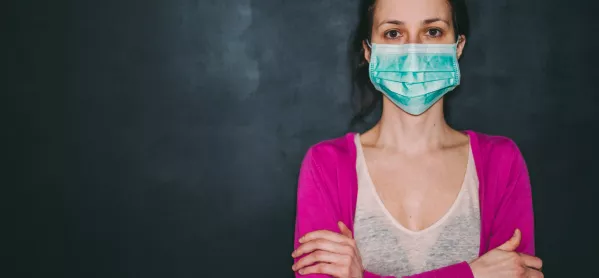Gesture has always be an integral part of effective teaching. Studies have found that a teacher’s non-verbal cues can inspire a higher level of interest in a topic, as well as bringing other learning gains.
Using non-verbal signals is something that all teachers should strive to do. But when we’re masked up, the emphasis on non-verbal cues becomes paramount. Masks muffle our voices, prevent lip-reading and eliminate other helpful facial prompts, like smiles.
Covid: Tips on body language when teaching in a mask
To overcome these communication barriers, we need to use our hands and bodies to ensure that our communication remains clear. Here’s how:
1. Count on your fingers
From an early age, maths and fingers are closely related. So when you’re summing up the three main conditions required for bacteria to survive, for example, use individual fingers to emphasise: 1) nutrients, 2) water and 3) the proper environment. Then go and wash your hands.
2. Weigh up alternatives
When considering competing arguments, channel your inner greengrocer and imagine you’re weighing up a pound of apples against a pound of pears. Curl your fingers slightly and place your palms upwards as you become a human set of scales, one hand literally balanced against the other.
3. Have a place for important points
A student once noticed that when I want to make a really important point, I stand on the other side of the whiteboard. This was a conscious move on my part but it was good to know that they had made the association, even if they’d just been distracted by the squeaky floor.
4. Highlight and delete points on the board
Writing a list on the board of things that students typically include in their answers is a useful scaffolding technique that can be emphasised further by theatrical circling or crossing out of certain bullet points. Even more helpful is when a teacher later returns to the board and taps energetically on these highlighted or crossed-out signs.
5. Use hand signals to develop questioning
Instead of using my muted voice, I often ask students to speak by aiming a flat palm in their direction. Even in a cramped class, if my eye contact is accurate, they know who I’m cold calling. Like a conductor, I then bring in other students. And if a response is too brief? A royal, one-handed circular wave signals that I’d like them to develop their answer.
When teaching behind a mask it can be a struggle to get your point across. But with a few explicit gestures, you’ll find that your students will understand you perfectly well. They might even understand you better than before.
Mark Roberts is an assistant headteacher in the South West of England


